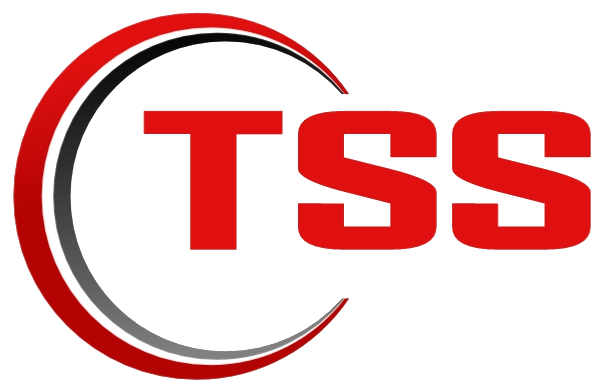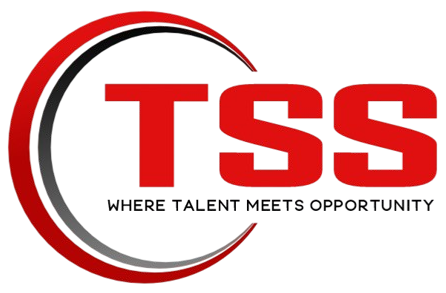Federal Employee Pay Raise

Our Executive Search Services in Baltimore, Maryland
Baltimore, MD, is an influential port city in the United States, playing an important role in shipping and international trade. Its waterfront location, rich history, and cultural attractions make the city a popular destination with a thriving tourism and hospitality industry.
Baltimore is also within easy reach of the nation’s capital at Washington, D.C., which has created a significant demand for federal and state government jobs, as well as defense contractors. Moreover, Baltimore is a leader in healthcare and biomedical research and is home to world-famous institutions such as the University of Maryland Medical Center and John Hopkins Hospital.
TSS is a full-service recruiting firm in the Baltimore area that offers premier staffing solutions to companies of all sizes seeking talented professionals to join their teams. We follow a meticulous approach to recruiting that allows us to customize our services to meet our clients’ specific human resources needs. Beyond sourcing top talent, we provide a range of other professional services, such as professional development, succession planning, and business transformation.
This meticulous approach to executive recruitment and our wide range of quality services are part of what makes us stand out from other staffing agencies in the industry.
What We Do
At TSS, our team of aerospace executive recruiters can deliver candidates with the right qualifications and merits to fill open executive and leadership roles within the industry. We achieve this through:

Assessment
Each candidate that shows interest in our client’s open roles is assessed thoroughly, with our team looking beyond their track record and soft skills. TSS recruiters also assess candidates for other factors, including their personality, work ethic, motivational drivers, and cultural alignment.

Talent Acquisition
We leverage our extensive network of connections to get referrals and recommendations for the best aerospace and engineering professionals who fit our client’s hiring requirements. In addition, we also make hundreds of cold calls and emails to “hard-to-reach” industry talents who may or may not be actively looking for new job opportunities.

Organization Transformation
Our team of headhunters has vast industry knowledge, having worked for aerospace businesses for years. Our expertise in the aerospace industry allows us to provide clients with guidance on improving processes and boosting employee engagement and retention rates.
The General Schedule (GS) pay scale is the Federal Government pay system used to calculate the salaries of federal civilian employees. It includes the majority of workers with white-collar jobs, which typically include administrative, professional, technical, and clerical positions.
In this article, we cover the latest updates regarding current and foreseeable changes to the GS according to Congress and White House policies.
How Does the GS Pay Scale Work?
The GS pay scale is administered by the United States Office of Personnel Management (OPM) on behalf of other federal agencies.
Salaries under the GS consist of a base salary and a ‘locality pay adjustment.’ The base salary is derived from a table compiled by the Office of Personnel Management and is used as a reference point for the locality pay adjustment.
The Locality Pay Adjustment
The locality pay adjustment is a measure that was introduced in 1994 under the Federal Employees Pay Comparability Act (FEPCA) in an attempt to address the need for pay reform between federal and non-federal workers.
In other words, there was a major gap between the salaries of individuals who worked for the state and those who worked in the private sector.
Additionally, all GS employees received the same pay regardless of location, which failed to account for the differences in the cost of living in major metropolitan areas.
To address the disparity between wages, FEPCA divided the United States into locality pay areas, the majority of which encompass large metropolitan areas such as Washington D.C., New York, and Los Angeles. Two additional areas cover the states of Hawaii and Alaska, while the remainder of the U.S. is included in the catch-all ‘Rest of U.S.’ locality pay area.
Under this framework, all the areas, bar the ‘Rest of U.S.’, are entitled to pay adjustments in addition to the general adjustment provided to all GS employees. The ‘Rest of U.S.’, on the other hand, only receives the general adjustment that all GS employees receive. Furthermore, salary adjustments for those in other U.S. territories and overseas occur separately from this adjustment.
Who Oversees Changes to the GS?

Changes to the GS are normally authorized via Executive Order from the President or via legislation by Congress. Generally, the President conducts annual across-the-board pay adjustments (including locality pay adjustments) at the start of each calendar year.
The across-the-board adjustments to the GS are based on the cost of employment in a given area as determined by the Department of Labor’s Employment Cost Index (ECI).
GS Pay Grades and Step Structure
The GS is divided into 15 pay grades, each comprising 10 steps. Jobs are classified into a specific pay grade according to the qualifications required and the level of responsibility involved.
Essentially, GS-grade 1 through GS-grade 7 are generally considered entry-level positions, while GS-grade 8 to GS-grade 12 comprise mid-level positions, and GS-grade 13 and above cover top-level positions.
New GS employees are usually placed in the first step of their assigned pay grade, although employers can employ someone in a higher step at their discretion (some agencies may even appoint them at a higher grade instead).
Advancing in the GS Pay Scale
As mentioned above, each pay grade in the GS pay scale consists of ten steps. Employees typically receive a step increase or federal pay raise after working for a predetermined amount of time in at least a satisfactory manner.
Generally, the length of time between each federal pay raise increases as the employee moves up the ranks, but it is also possible for them to receive a ‘quality step increase’ (QSI) as a reward for outstanding work performance, which will reduce the overall time it takes for them to reach the final step in their pay grade.
The time intervals between each pay increase are as follows:
- Steps 1 to 4 = 1 year
- Steps 4 to 7 = 2 years
- Steps 7 to 10 = 3 years
It is also possible for employees to advance to a higher pay grade, though this depends on their job description and the agency they work for. This type of advancement usually takes place within a ‘career ladder’; that is, employees who perform satisfactorily will move up the GS grades, typically on a yearly basis, until they reach the highest GS grade for that career. Advancing beyond the top grade (such as to a managerial or specialized technical position) generally occurs via competitive selection.
However, not all professions accommodate such a ‘career ladder’. This forces employees seeking advancement to pursue alternative lines of work, either within their organization or elsewhere.
Updates to the 2024 GS Pay Raise
Federal employees received a 5.2% pay rise in January 2024. President Biden signed the executive order, which marks the biggest raise in over 40 years, since the early 1980s. The pay rise is divided into two parts – a blanket 4.7% increase for all employees and a 0.5% locality increase based on where federal employees work.
In addition, the OPM has established four new pay rate localities:
- Fresno-Madera-Hanford, California
- Reno-Fernley, Nevada
- Rochester-Batavia-Seneca Falls, New York
- Spokane-Spokane Valley-Coeur d’Alene, Washington-Idaho
The new pay tables and pay areas can be found on the OPM website.
This pay raise aims to enable the Federal Government to retain a qualified federal workforce and a competitive labor market despite the growth and retention difficulties that have led to a disparity in pay between federal and non-federal employees.
Our success fee is 20%. No upfront costs.
Employers: TSS Provides Free Consultation On Current Market Conditions and Salary Ranges
All information shared will remain confidential.
What Makes us Different

Tailored Service Excellence
Our dedicated senior consultants provide attention to detail at every stage of the search process, ensuring tailored results that exceed expectations.

Nationwide / Global Talent Acquisition
Leveraging our extensive network, we identify and attract world-class leadership candidates from diverse backgrounds and locations

HR Advisory Services
We offer expert guidance to optimize your HR processes, enhancing efficiency, reducing workloads, and boosting employee retention and engagement.

Fast Turnaround time
Our consultants work to expedite search executions. Minimizing time-to-hire while seeking the best talent in the market.

Comprehensive Solutions
Beyond recruitment, we provide value-added services from organizational health to leadership development programs
Our Standard Search Practices
TSS follows the highest industry standards when searching for leaders for its clients.

Replacement Guarantee
We contractually commit to replacing any hire that doesn’t meet expectations.

Industry-Leading Assessments
We provide comprehensive evaluations, including personality insights, for all shortlisted candidates.

Off-Limits Agreement
We protect our clients’ interests by making their leadership teams off-limits for candidate sourcing. As trusted consultants, we prioritize our clients’ organizational success.

Dedicated Team
A senior consultant and their team serve as your primary point of contact throughout the search process and maintain communication with you and the new hire.

Thorough Reference Checks
We perform extensive background checks including credit, education, criminal, and employment history verification. We also process security checks where necessary.






